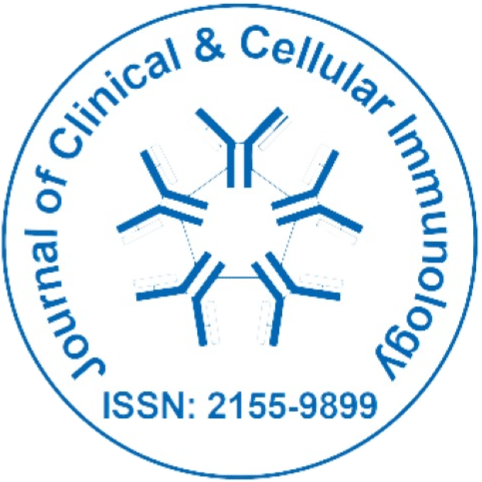
Journal of Clinical and Cellular Immunology
Open Access
ISSN: 2155-9899
+44 1223 790975

ISSN: 2155-9899
+44 1223 790975
Jae Young Kim and Cao Nguyen Duong
Posters-Accepted Abstracts: J Clin Cell Immunol
Toll-like receptors (TLR) are essential components of innate immune system. TLR5 is the receptor for flagellin, the principal protein component of bacterial flagella. TLR5 gene is known to have 6 exons. However, previous transcriptome data of TLR5 suggest the possible existence of an additional exon derived from the fourth intron. In this study, we have identified and sequenced the extra exon from the human TLR5 transcripts. The new human TLR5 exon consists of 94 nucleotides and is located between known exons 4 and 5 in the 5�??-untranslated region (5�??-UTR). Real-time PCR analysis of the two alternatively spliced variants of the human TLR5 transcripts in various immune and non-immune cells showed that the transcripts with the extra exon abundantly express in non-immune cells. Ratios of the transcripts with the extra exon to those without the extra exon of human non-immune cells, such as epithelial cells, glial cells, keratinocytes and mesenchymal stem cells, were in the range of 1.3 to 4.5. In contrast, those of immune cells including human monocytes and T cells were around 0.9. These ratios of human monocytes were decreased by the treatment of IFN-γ in a concentration dependent manner, while those were not changed by the IL-4 treatment. The ratio began to decline at 3 h, reach 60% of normal ratio at 6 h, and then return to normal at 24 h after the IFN-γ treatment. Our results reveal that expression levels of new splicing variant of TLR5 gene in monocytes were lower than those in non-immune cells and were significantly decreased by the treatment of IFN-γ, suggesting possible negative regulatory role of this extra exon of 5�??-UTR in TLR5 protein expression of human monocytes.
Jae Young Kim has completed his PhD at the age of 32 years from Dongguk University and postdoctoral studies from Seoul National University College of Medicine, Seoul, Korea. He had served as a chairman of the Department of Biological Science, Gachon University, Incheon, Korea. He has written more than 25 papers in immunology and has been serving as a senior editor of Korean Society for Transplantation.